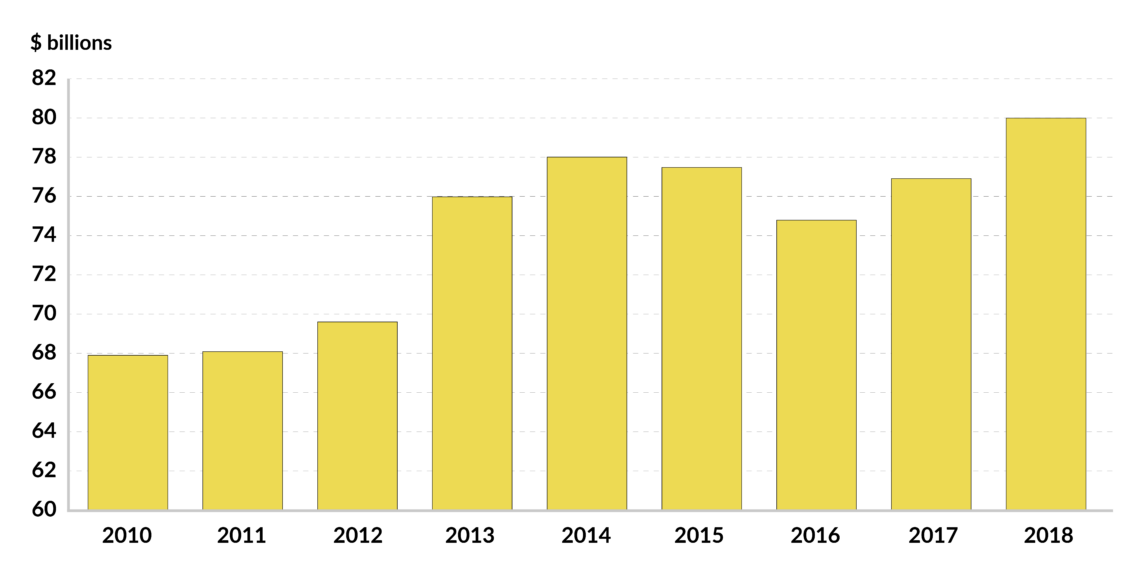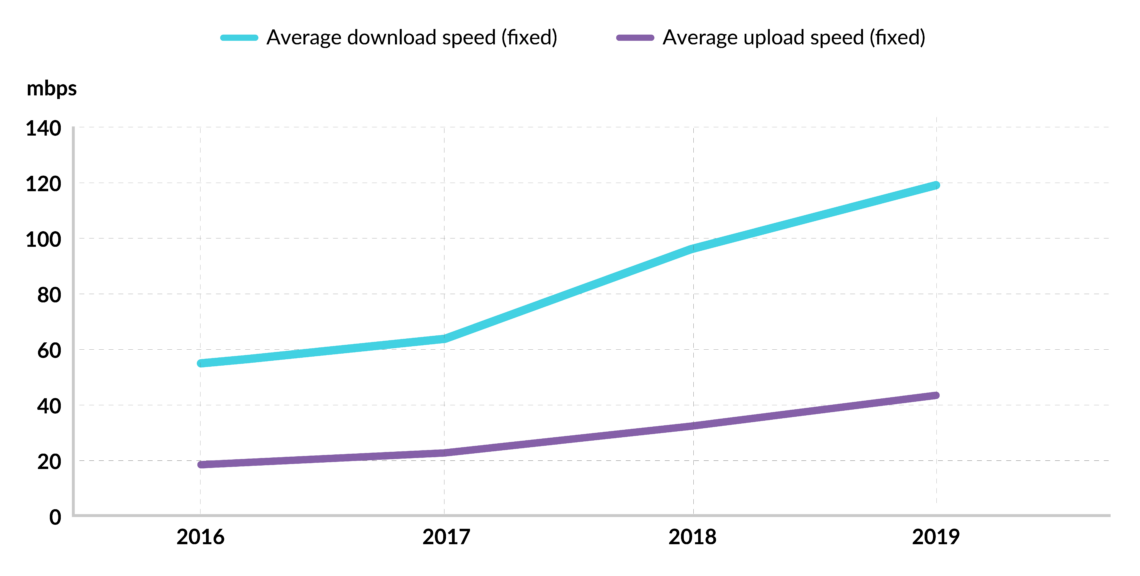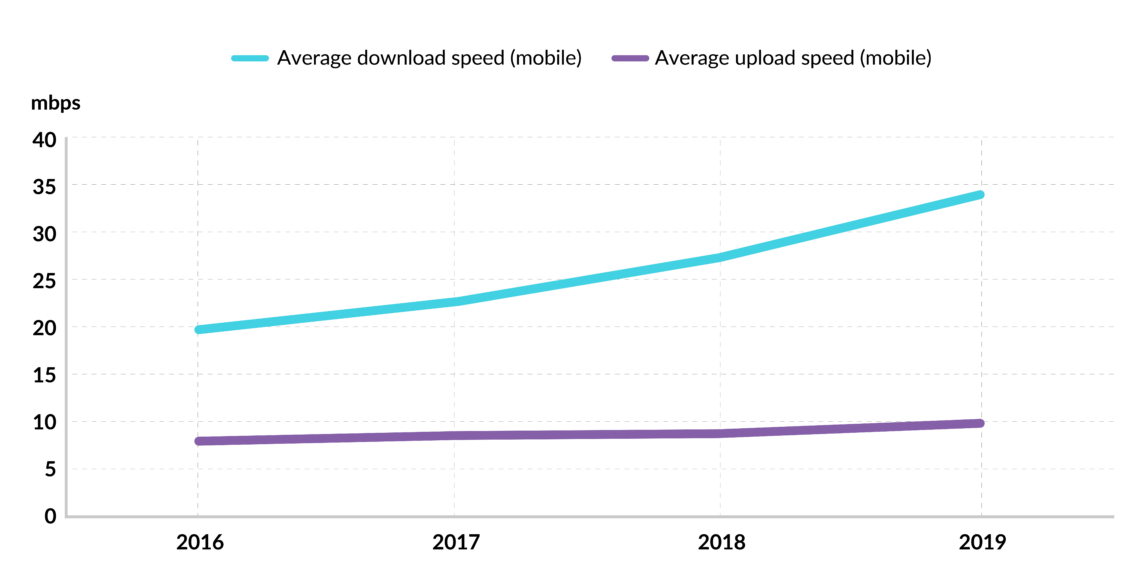The fight over net neutrality continues
Transmission speeds have increased and network investment is booming since the repeal of net neutrality rules. Yet regulatory proponents are still pursuing neutrality measures in state legislatures. As a result, some U.S. States have adopted their own net neutrality regulations.

In a nutshell
- Internet service providers have not begun manipulating broadband speed
- Net neutralists are pushing their agenda at the state level
- The current situation could lead to an uneven patchwork of state regulations
The United States repealed net neutrality regulations 18 months ago, and there is no sign of the calamitous consequences that critics threatened. On the contrary, network investment is robust, broadband speeds are accelerating, and competition is intensifying. The only real problem these days is the refusal of the regulatory advocates to concede defeat.
Whether to allow internet service providers (ISPs) to offer tiers of service or to require neutrality in all transmissions has been a subject of debate for more than two decades. Neither presidents nor federal judges have brokered a consensus on the issue, while members of Congress dodge their constitutional duty to make law.
Internet service providers are currently operating under the “Restoring Internet Freedom Order,” which was officially adopted by the Federal Communications Commission (FCC) on February 22, 2018 (effective as of June 11, 2018). On a vote of three to two, the order repealed the net neutrality regulations imposed three years earlier by the FCC under the orders of then-President Barack Obama.
Net neutralists continue to demand that functionaries assume control of the economy’s most dynamic sector.
In the run-up to the repeal, critics unloosed ominous prophecies of online apocalypse. For example, Katrina Vanden Heuvel, then-editor and publisher of The Nation, warned that without regulation, communications company AT&T could “practice internet censorship akin to that of the Chinese state.” Stoking fears that ISPs would malevolently slow or block transmissions, Senate Democrats tweeted (in 15 lines of one word each) that “If we don’t save net neutrality, you’ll get the internet one word at a time.” Senator Bernie Sanders, meanwhile, said repeal would “end the internet as we know it.”
They have all been proven spectacularly wrong about the necessity of regulatory constraints to prevent internet service providers from abusing their customers. It seems to have escaped the critics’ notice entirely that the internet grew from a single website in 1991 to more than 1.7 billion sites and 4.5 billion users without the government calling the shots. Unfettered by regulation – net neutrality or otherwise – the private sector has invested more than $1.7 trillion to build U.S. networks utilized by 90 percent of Americans.
That is not good enough, apparently, for the net neutralists who continue to demand that functionaries assume control of the economy’s most dynamic sector. Thus, the U.S. remains embroiled in a costly battle over a defective response to a nonexistent problem.
Facts & figures

Doomsday dodged
There is no tangible evidence that ISPs are manipulating transmission speeds to extort premium payments from customers. Nor are they crashing browsers when users order from Dominos because Pizza Hut pays them to do so. In fact, network investment is robust, transmission speeds are better than ever, and broadband access is increasing at double-digit rates.
Notably, U.S. network investment declined for the first time (outside of a recession) after the imposition of net neutrality regulations in 2015. The decline of $500 million that year worsened in 2016, when capital investment fell by another $2.7 billion. Investors at the time were understandably anxious about the FCC’s reclassification of ISPs from information services to common carrier services – a bureaucratic gimmick to rationalize a raft of regulatory obligations. Investment rebounded by a whopping $5 billion after it was announced that net neutrality regulations would be revoked in 2017, reaching a record of $80 billion in 2018.
Not all of the recent increases are attributable to the “light touch” of the current administration. Deployment of new network infrastructure for 5G – the fifth generation of wireless technology – is also a factor. Even so, investors would likely have been more cautious about undertaking network upgrades and modernization if they had been forced to navigate pointless regulatory hurdles.
Broadband speeds for both fixed and wireless services have substantially increased since 2017.
Industry optimism continued in 2019, when deployment of residential fiber broadband (enabling faster transmissions and greater capacity) increased by 16 percent – providing high-speed access to an additional 6.5 million homes. It seems unlikely that an industry bent on throttling transmissions would spend billions of dollars to widen its pipes. Contrary to net neutralists’ predictions of reduced transmissions, broadband speeds for both fixed and wireless services have substantially increased since 2017.
The increased speed and capacity promotes the creation of new products and services for consumers and thus stimulates competition among content creators. So much for the prognostications of the American Civil Liberties Union (ACLU), which warned that, absent net neutrality, the quality of internet connections and content were “at risk of falling victim to the profit-seeking whims of powerful telecommunication giants.” Alas, the group has also proclaimed “The fight isn’t over.”
State of play
The latest judicial ruling in this saga came on February 6, 2020. The U.S. Court of Appeals for the District Columbia Circuit denied multiple appeals to reconsider its 2019 decision to uphold the FCC’s repeal of the Obama-era rules. Whether regulatory advocates will pursue yet another lawsuit remains to be seen, but they are, at present, actively pursuing their agenda in Congress and state legislatures.
The Democrat-controlled House voted in April 2019 to reinstate net neutrality regulations via the “Save the Internet Act.” However, Senate Majority Leader Mitch McConnell (R-Kentucky) declared the measure “dead on arrival,” and he has stuck to that.
Facts & figures

The political dynamic could change because of activity at the state level. ISPs and other industry stakeholders would undoubtedly press members of Congress to act rather than succumb to a 50-state “patchwork” of net neutrality laws.
The FCC tried to foreclose that result when it issued a nationwide preemption with its 2018 repeal of net neutrality regulations. The Supremacy Clause of the U.S. Constitution declares, in part, that the laws and treaties of the federal government are “the supreme law of the land.” Therefore, federal law preempts state law in the event of a conflict.
Although the appeals court upheld the FCC’s repeal of the regulations, it struck down the commission’s blanket preemption of state-level net neutrality regulation. Instead, the court ruled that the FCC must adjudicate preemption on a case-by-case basis. But that approach could be challenged; advocates claim that the commission effectively surrendered its regulatory authority when it reversed the classification of ISPs as “common carriers.”
None of the supposed evils of a permission-less internet has come to pass.
Four states—California, Oregon, Washington and Vermont—have adopted various elements of net neutrality regulation, and bills are pending in legislatures across the country. Most notably, New York Governor Andrew Cuomo is aggressively pursuing his own set of net neutrality rules.
California and Vermont both agreed to freeze enforcement of their regulations until all relevant judicial appeals are exhausted – including a Trump administration lawsuit against California. The regulations adopted by Washington and Oregon remain in force.
Scenarios
The pressure of state action obviously provides additional political leverage for regulatory advocates. Given the choice between a single federal regulatory regime and 50 sets of state rules, ISPs and other stakeholders would undoubtedly opt for the former over the latter. However, that momentum weakens as reality repudiates advocates’ scaremongering on a daily basis. The fact is, none of the supposed evils of a permission-less internet has come to pass. But truth has played little role in this two-decade conflict, and there is little reason to believe it will do so any time soon.







